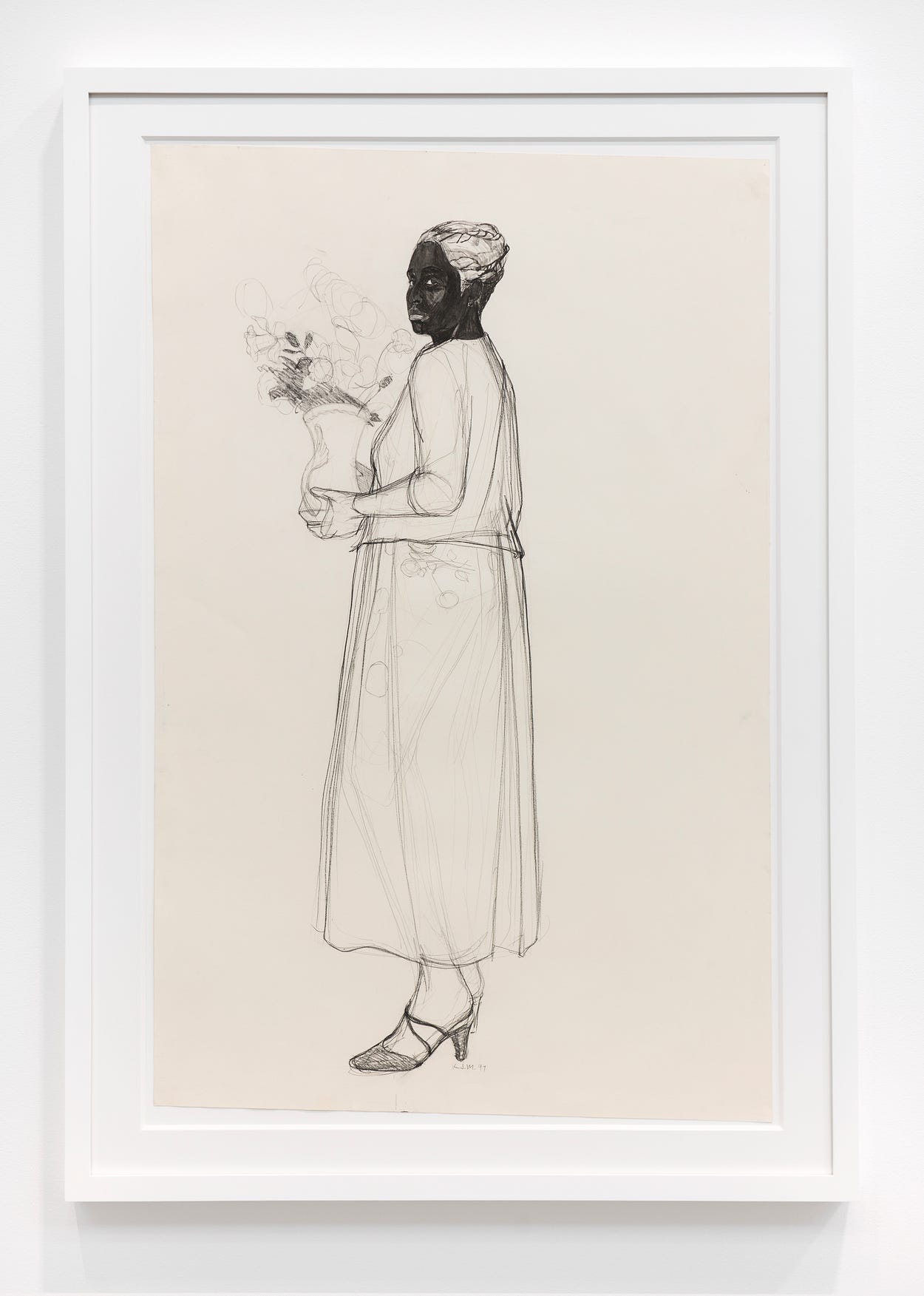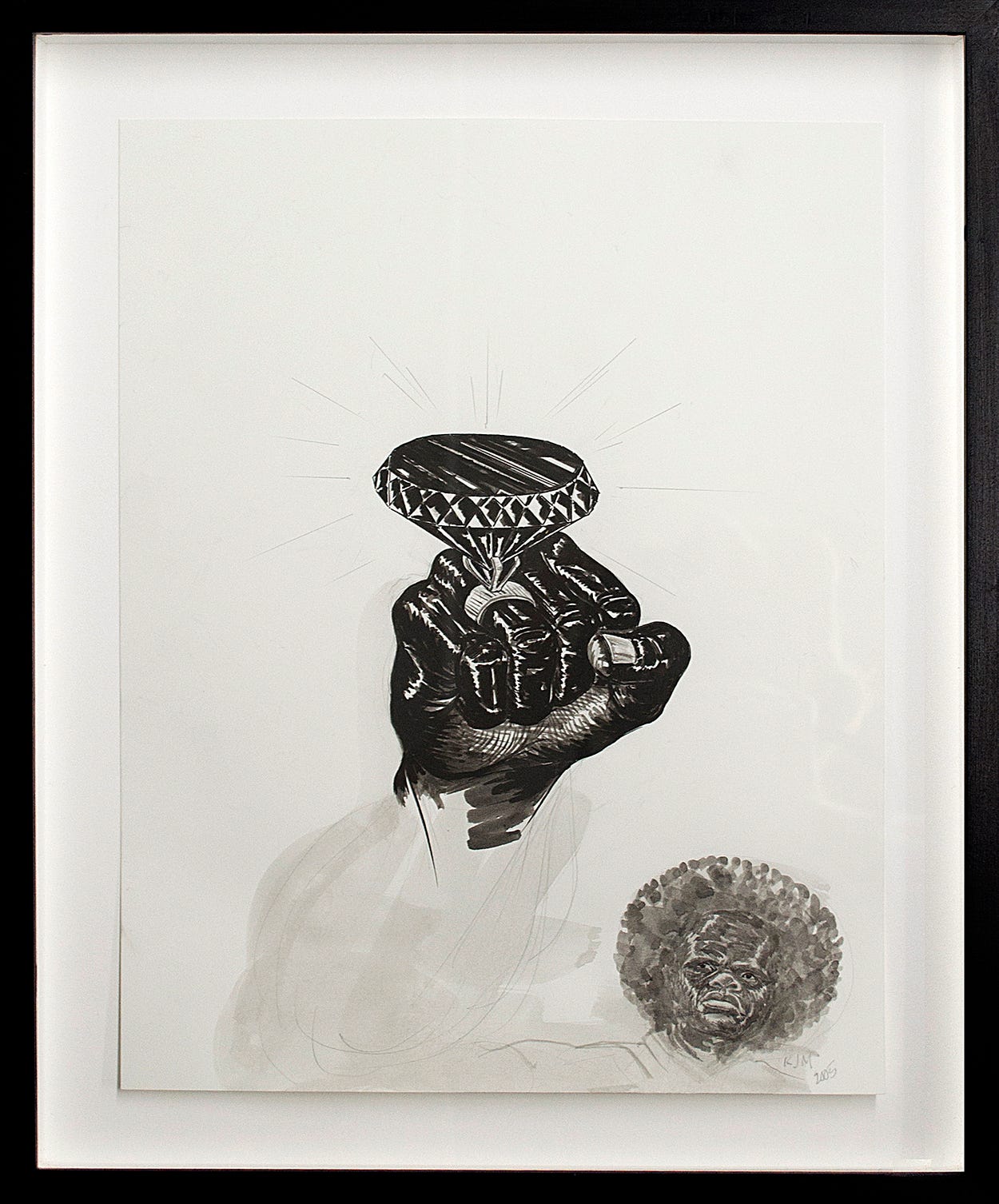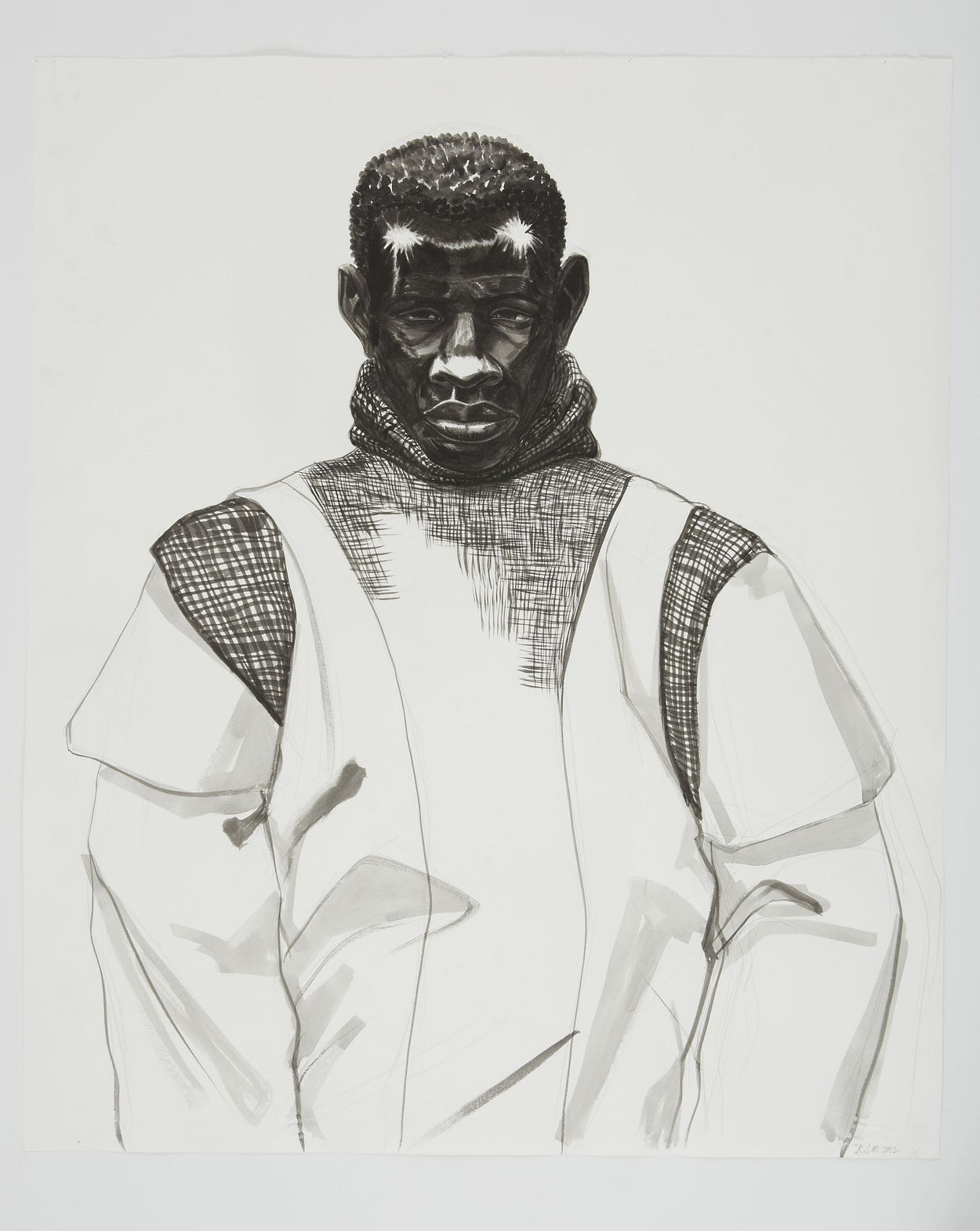Kerry James Marshall: Emphasizing the Mundane Over the Remarkable
- Blog Post
- Exhibitions

© Kerry James Marshall. Photo by Kendall Karmanian. Courtesy of the artist and Jack Shainman Gallery, New York.
Over the last 35 years, Kerry James Marshall (American, born 1955) has created groundbreaking work that gives visibility to narratives centered on African American identity. Through his paintings, Marshall has become one of the most acclaimed and influential artists of his generation, offering alternative narratives to the ones he studied in art history survey books.

Alongside his paintings, Marshall has an active practice making works on paper, which is the focus of Kerry James Marshall: Works on Paper. The exhibition is currently on view at the Cleveland Museum of Art in the James and Hanna Bartlett Prints and Drawings Gallery (gallery 101), organized on the occasion of the first FRONT International: Cleveland Triennial of Contemporary Art (opens in a new tab).
The show is anchored by a monumental 12-panel woodcut print from 1999 that takes the viewer from an aerial perspective of an suburban grid into the intimate setting of a home. An array of drawings of smaller scale, spanning the arc of Marshall’s career, complement the woodcut and emphasize the seminal artist’s ongoing investigations of private and public space.
Why are works on paper the focus of this exhibition?
Marshall’s deep and wide-ranging knowledge of art history is evident in his work across a variety of media. His drawings in particular reveal his reliance on techniques associated with Old Master traditions, even as his art questions many of the ideals that those traditions support.
A series of close-up studies of hands directly relates to the long tradition of anatomical studies through which artists since the Renaissance have attempted to develop a lifelike depiction of the human figure and to refine certain gestures and poses.

The two versions of Untitled (Study for Sofa Girl) from 2014 show Marshall developing a composition by experimenting with different line types and textures and by adjusting the placement of his subject’s limbs as she reclines.
Across the iterations of Untitled (Stono Drawing) from 2012, Marshall varies his handling of light and shadow — the classical chiaroscuro technique — in relation to the tonalities of the figures’ skin. An architectural schematic reveals his meticulousness in mapping spatial perspective — another age-old strategy associated with classical representation — to frame the elements in the composition.

How does the 12-panel woodcut exemplify Marshall’s ideas on the “counter-archive”?

The woodcut unfolds in a cinematic progression from left to right, taking us from a bird’s-eye view of a suburban grid, past the façade of a building adorned with a window box of flowers, and into an apartment where six black men casually socialize in a pink-walled living room. The scene is plain in nature and quiet in tenor.
“All my life I’ve been expected to acknowledge the power and beauty of pictures made by white artists that have only white people in them; I think it’s only reasonable to ask other people to do the same vis-à-vis paintings that have only black figures in them. That is part of the counter-archive that I’m seeking to establish in my work.” -Kerry James Marshall¹
Marshall goes on to make a subtle qualification to the notion of a counter-archive: “In fact . . . my work is not an argument against anything; it is an argument for something else.”²
The year Marshall completed the work, he noted that in contrast to images that present African American men “as somehow threatening, somehow violent, somehow irresponsible, somehow nihilistic and alienated,” he wanted “to show that representations of African Americans can be incredibly mundane, that they can be ordinary and they don’t have to be event-filled or anxiety-laden or about political activism. They can just be a picture. Period.”³
By emphasizing the mundane over the remarkable, Marshall creates a picture with which his viewers are likely familiar and into which they can easily project themselves. This invitation is reiterated in the work’s size and the scale of the imagery, which relates to that of a human body and thus allows for a physical correspondence between the viewer and the figures.
Kerry James Marshall: Rythm Mastr at the Cleveland Public Library
June 9–October 21
Main Library, lower level
In conjunction with Kerry James Marshall: Works on Paper, a selection of works from Marshall’s ongoing comic series Rythm Mastr (1999) are on view at the downtown branch of the Cleveland Public Library. In these prints, he animates the history and mythology represented by traditional African sculpture, developing an array of black protagonists. This presentation was designed in part as recognition of the role that public libraries played in Marshall’s early formation as an artist.
The presentation is part of FRONT International: Cleveland Triennial of Contemporary Art (opens in a new tab).
- Dieter Roelstraete, “An Argument for Something Else: Dieter Roelstraete in Conversation with Kerry James Marshall, Chicago, 2012,” in Kerry James Marshall: Painting and Other Stuff, exh. cat., ed. Nav Haq (Antwerp: Ludion, 2014), 28.
- Ibid.
- Sue Scott, Kerry James Marshall: A Narrative of Everyday, Currents 6, exh. brochure (Orlando, FL: Orlando Museum of Art, 1998–99), n.p. More recently, Marshall has noted that he avoids rendering African American subjects playing jazz or sports because such images “reinforce the feeling that black people are best when they are the most entertaining. I want to undercut that.” See “Kerry James Marshall in Conversation with Angela Choon,” in Kerry James Marshall: Look See, exh. cat. (New York: David Zwirner Books, 2015), 100.